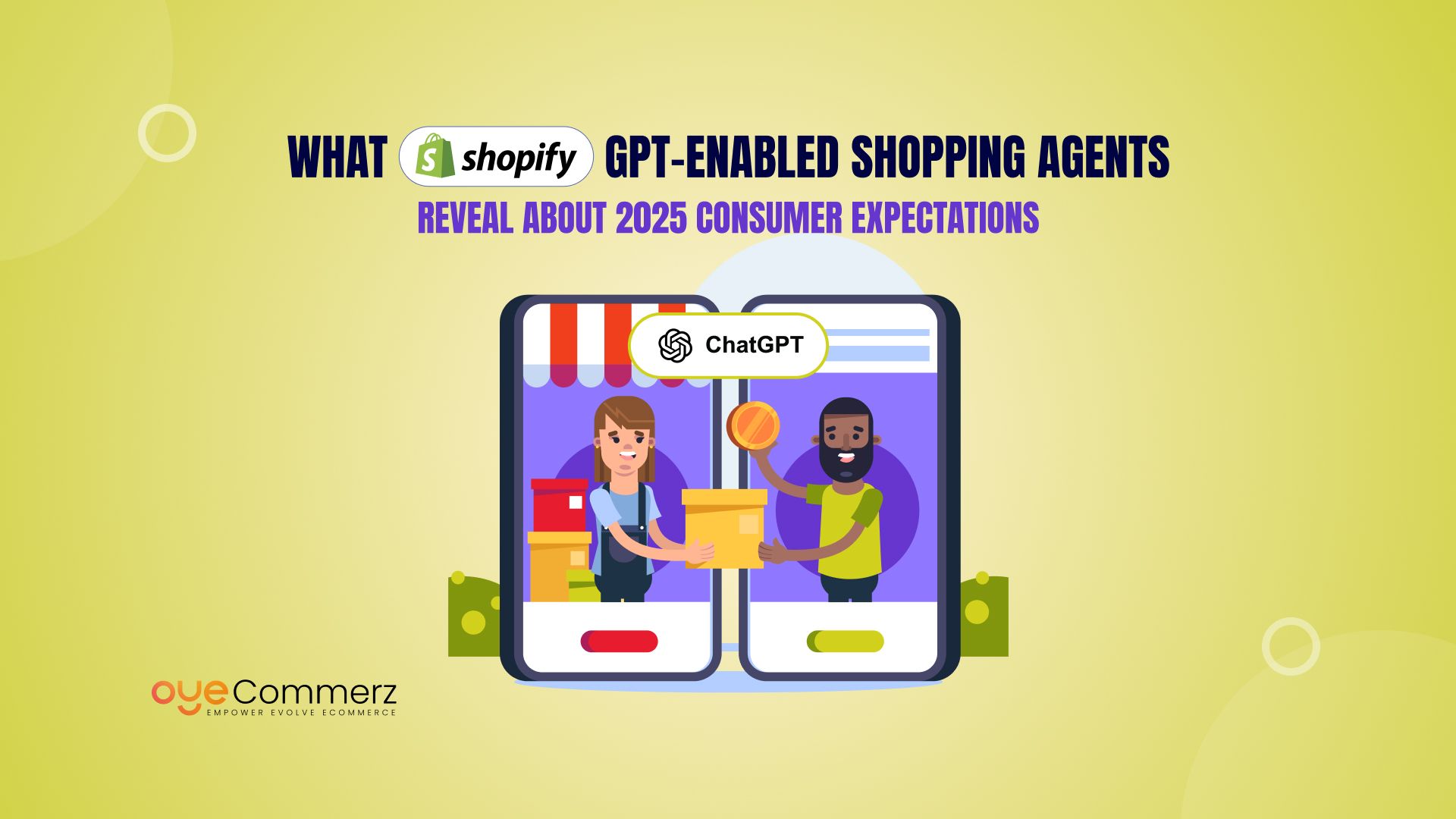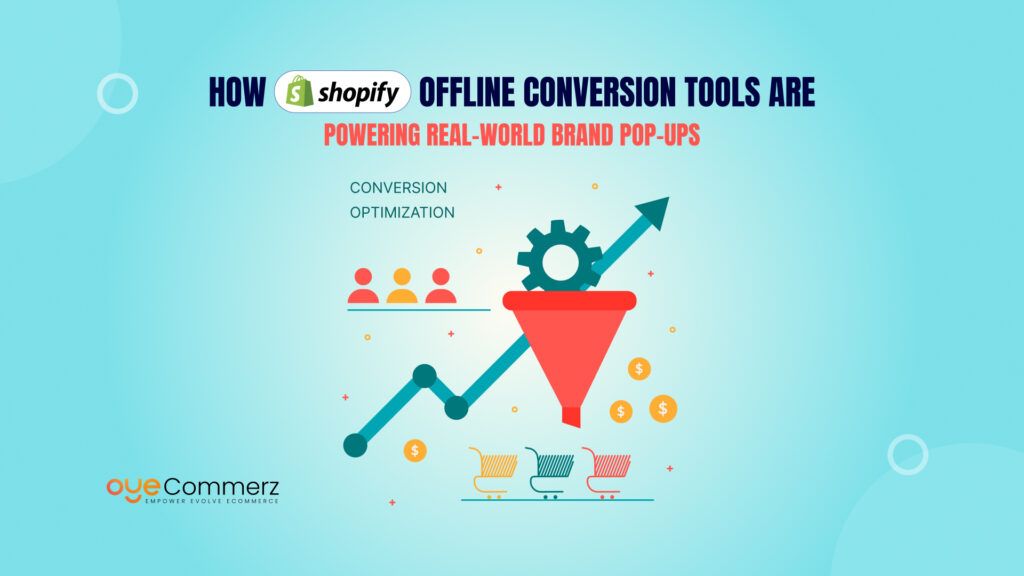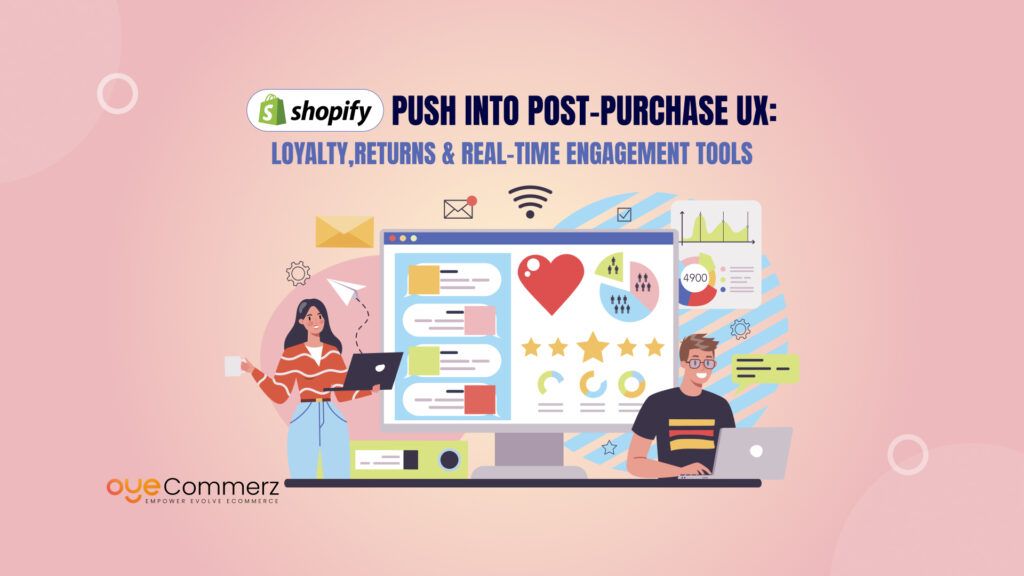Are you ready for a world where online shopping feels like speaking to a smart, personal assistant? According to Statista, over 80% of U.S. consumers now expect brands to offer personalized experiences, and that demand is only rising. Shoppers today want more than static product listings. They crave real-time support, effortless navigation, and instant, accurate answers.
But here’s the catch: 74% of users abandon their carts when stores can’t respond quickly or effectively. Traditional ecommerce setups are falling short. Outdated tools and generic automation no longer meet evolving consumer needs.
That’s where Shopify’s GPT-Enabled Shopping Agents step in, AI-powered innovations designed to transform ecommerce interactions. Built on the foundation of powerful Shopify services, these agents learn, adapt, and assist intelligently, setting a new standard in user experience. As we step into 2025, they’re not just optional, they’re essential for brands that want to lead, not lag.
Shopify’s GPT-Enabled Shopping Agents: A Glimpse into the Future of Ecommerce
The future of ecommerce is no longer about browsing through product grids or filtering through endless menus. It’s about intelligent interaction. Shopify’s GPT-Enabled Shopping Agents are leading this shift by bringing human-like conversation, contextual understanding, and predictive logic into the online shopping journey.
These AI-driven agents operate in real time, interpreting customer intent through natural language inputs and instantly delivering relevant results. They’re not pre-programmed bots, they’re dynamic assistants powered by generative AI, capable of understanding nuances, preferences, and follow-up queries.
Here’s how they integrate into and enhance the Shopify ecosystem:
- Real-time interaction: Customers can ask questions, get product suggestions, or troubleshoot issues, without navigating away from the page.
- Backend integration: These agents pull data from product catalogs, inventory levels, shipping policies, and customer histories using Shopify’s robust APIs.
- Storefront personalization: From tailored recommendations to customized search results, the user experience feels intuitive and direct.
- Checkout assistance: The AI helps reduce friction at crucial moments, such as applying discounts, verifying shipping times, or clarifying return policies.
Unlike traditional ecommerce tools that rely on static scripts or decision trees, these agents evolve. They learn from every conversation, improving accuracy and depth over time.
These AI agents don’t just assist, they anticipate. They redefine how stores engage with users by replacing cold automation with context-rich, real-time interaction.
More than a technical upgrade, this shift represents a fundamental reimagining of online shopping, where conversations replace clicks, and experiences adapt as fast as user intent changes.
As ecommerce heads into 2025, these AI shopping agents powered by Shopify services are not just tools, they’re the bridge to smarter, faster, and more human digital commerce.
Shoppers Now Demand More Than Static Online Stores
The ecommerce landscape in 2025 is shaped by one undeniable fact, consumers no longer settle for generic digital experiences. Personalization, speed, and intuitive interaction are not luxuries; they’re expectations. US shoppers now expect ecommerce platforms to behave like smart assistants, not static catalogs.
Traditional ecommerce models, built around product filters, static FAQs, and manual support, are falling behind. These outdated tools lack the intelligence to understand user context, leading to slower responses and irrelevant suggestions. The result? Friction at every step of the shopping journey.
A recent study revealed that many consumers are willing to switch brands if they encounter a poor digital experience. That’s a warning sign for businesses relying solely on conventional tools.
Common points of friction include:
- Delayed customer support: Waiting for email replies or offline chat assistance disrupts the user journey.
- Limited personalization: Generic product listings fail to align with user preferences.
- Overwhelming product navigation: Heavy filter-based systems confuse rather than help.
- Ineffective content: Static FAQs don’t address real-time customer queries.
Insight Table: 2025 Consumer Demands vs Traditional Store Limitations
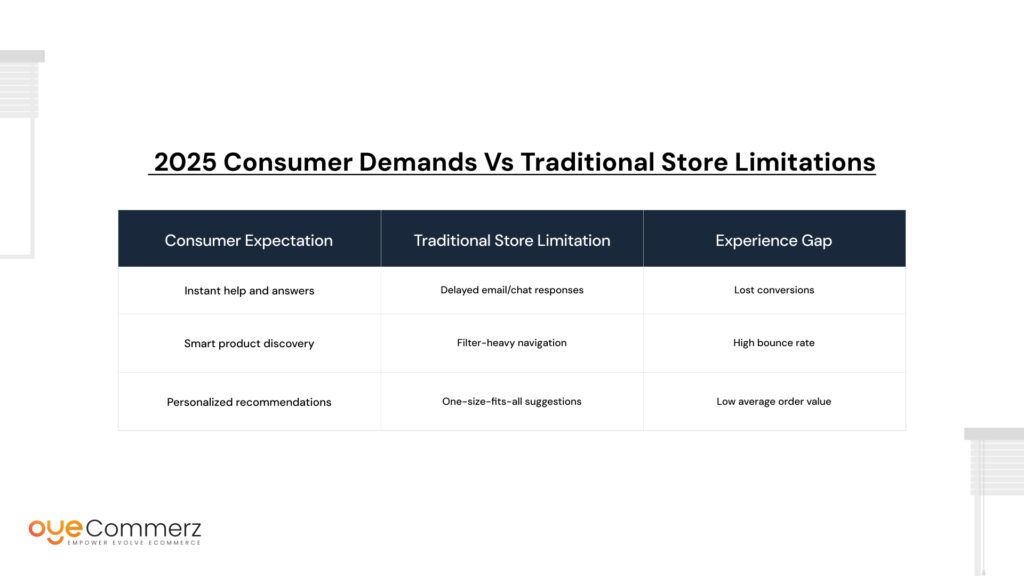
Today’s shoppers are looking for experiences that evolve with them, responsive, relevant, and real-time. Businesses that fail to bridge this experience gap risk not just customer dissatisfaction but complete disconnection.
This growing divide is exactly what Shopify’s GPT-Enabled Shopping Agents aim to resolve, ensuring brands meet rising customer expectations without missing a beat.
Where Traditional Ecommerce Tools Fall Behind
While digital commerce has evolved rapidly, many ecommerce businesses remain tied to outdated systems. Rule-based chatbots, hard-coded flows, and basic automation may have served a purpose in the past, but in 2025, they’re barriers, not solutions. These tools fail to grasp intent, lack adaptability, and often deliver irrelevant or repetitive interactions that frustrate users.
Consider the limitations:
- Rule-based chatbots: These offer canned responses that don’t address customer-specific questions or nuances.
- Static automation: Lacks the intelligence to adapt to user behavior or deliver contextual answers.
- Manual workflows: Require constant oversight, making them inefficient and inconsistent.
- Rigid segmentation: Doesn’t account for real-time changes in customer needs or journey.
Merchants relying on these models struggle to scale effectively. Responding to hundreds of unique inquiries with manual support consumes resources and time. During critical moments, like checkout assistance, return clarification, or live product comparison, traditional systems fall flat.
Examples of friction include:
- A customer unsure about product compatibility receiving a generic FAQ link
- Repetitive queries about shipping timelines not getting prompt resolution
- Cart abandonment due to the absence of live, contextual assistance
The result of this inefficiency?
- Abandoned carts due to lack of support during conversion
- Low customer retention from poor post-purchase engagement
- Decreased loyalty when shoppers don’t feel understood or valued
Friction in ecommerce is no longer a speed bump, it’s a deal-breaker.
Modern consumers expect ecommerce platforms to mirror the fluidity and intelligence of real-world assistance. Anything less leads to missed opportunities and lost revenue. It’s not just about having tools, it’s about having the right tools. Businesses that fail to move beyond static systems will find themselves outpaced in an era where speed, context, and personalization reign supreme.
How Shopify’s GPT-Enabled Shopping Agents Close the Expectation Gap
As online shoppers grow more sophisticated, ecommerce platforms must evolve beyond static workflows. That’s exactly what Shopify’s GPT-Enabled Shopping Agents achieve. These intelligent agents use advanced natural language processing (NLP) to turn product discovery into a conversation, mirroring the ease and responsiveness of a human assistant.
Unlike basic automation, these agents are trained on store-specific data including product catalogs, return policies, and FAQs. This makes every response personalized, relevant, and instantly useful. Customers can ask questions in their own words, like “Do you have summer shoes in size 9 under $50?”, and get accurate, real-time answers.
Key improvements include:
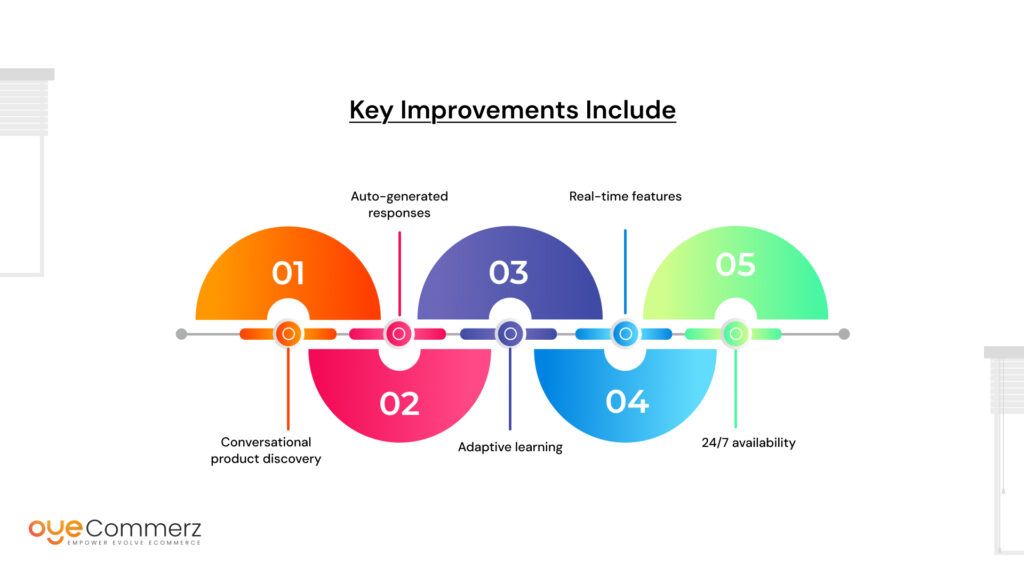
- Conversational product discovery: NLP allows natural, free-form queries.
- Auto-generated responses: Based on store data, not generic scripts.
- Adaptive learning: Improves over time as it processes more real customer queries.
- Real-time features: Inventory lookups, multilingual communication, and checkout assistance without delay.
- 24/7 availability: Reduces dependence on live agents and extends customer support around the clock.
These capabilities directly impact user engagement and operational efficiency. Shoppers get relevant answers instantly, while brands enjoy fewer abandoned carts, longer session durations, and higher conversion rates.
Technical Table: GPT Agent Capabilities vs Business Impact
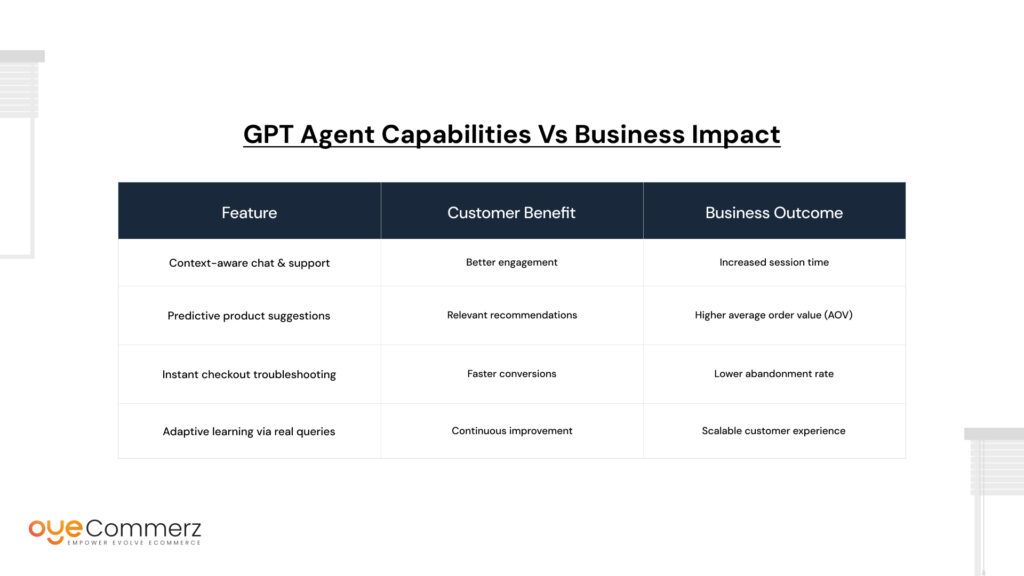
By eliminating friction and offering dynamic support, these AI agents deliver the personalized, fast-paced service that today’s ecommerce audience demands, turning browsing into buying, and transactions into relationships.
Building for 2025: What Consumer Behavior Data Tells Us
As we look toward 2025, e commerce is no longer just about sleek websites and fast delivery, it’s about “agentic” commerce, where intelligent systems assist, guide, and enhance every stage of the buying journey. Consumers now expect AI not just as a backend tool but as a front-line assistant in making purchase decisions.
A key driver of this transformation is the rise of Gen Z, a generation fluent in conversational tech. According to recent consumer research, 51% of Gen Z shoppers prefer chat-first interactions when browsing or purchasing online. They want fast, personalized answers, not dropdown menus and long forms.
Other behavioral shifts are equally important:
- Omnichannel consistency: Shoppers expect the same intuitive experience on mobile, desktop, and even voice-enabled devices. Any gap in experience breaks trust and reduces engagement.
- Personalized decision-making: Today’s consumers don’t just want product recommendations, they want them based on their past behaviors, preferences, and in-the-moment needs.
- Conversational navigation: The trend is moving away from menus and filters to smart, language-based search and interaction.
Businesses that align with these shifts are seeing tangible benefits. Early adopters of AI-powered shopping assistants report a 20–30% increase in ROI, driven by better engagement, improved customer satisfaction, and lower operational costs. The more human-like and helpful the experience, the more likely users are to return, convert, and stay loyal.
Retailers integrating AI at the interface level, not just backend logistics, are already outperforming competitors stuck in traditional, static ecommerce frameworks. These systems don’t just sell more, they sell smarter.
The future isn’t about AI replacing humans. It’s about AI empowering every interaction.
Understanding these behavior patterns isn’t optional anymore, it’s a business imperative. Brands that recognize and respond to these consumer signals today will lead the market tomorrow. Ignoring these trends means building for yesterday in a world that’s already moved ahead.
Behind the Tech- Shopify’s GPT Model Integration Explained
Shopify’s leap into AI-driven ecommerce centers on the seamless integration of OpenAI’s GPT models within its platform. This integration enables merchants to deploy Shopify’s GPT-Enabled Shopping Agents that understand, assist, and personalize customer interactions in real time.
At the core, the GPT models are trained using store-specific data. This includes:
- Product catalogs with detailed descriptions and attributes
- Order histories that reveal customer preferences and buying patterns
- Store policies like shipping, returns, and discounts
This contextual data is securely pulled to ensure the AI’s responses are accurate, relevant, and aligned with each merchant’s unique offerings. Importantly, merchants maintain full control over what information the AI accesses, learns from, and shares during customer interactions. This safeguards privacy and brand consistency.
From a development perspective, Shopify supports extensive front-end customization through its Liquid templating language and the Hydrogen framework. This flexibility allows stores to create unique user experiences powered by AI, whether that’s a custom chat widget or an intelligent product recommendation module.
Furthermore, Shopify’s modular API access benefits developers by providing scalable tools to integrate GPT capabilities wherever needed, be it storefronts, apps, or backend services. This ecosystem approach encourages innovation without locking merchants into rigid solutions.
Highlight Box: Shopify’s GPT-enabled agents are not one-size-fits-all, they’re tailor-made for every store.
This modular, data-driven integration transforms AI from a generic chatbot into a dynamic assistant finely tuned to each business’s needs. It bridges the gap between advanced AI technology and practical ecommerce application, making smart shopping agents a viable, customizable asset for merchants of all sizes.
Ultimately, this tech backbone empowers Shopify stores to deliver highly personalized, conversational commerce experiences that match the demands of the modern consumer.
How Shopify Merchants Can Prepare for GPT Integration

To fully leverage the benefits of Shopify’s GPT-Enabled Shopping Agents, merchants must take strategic steps to ready their stores for AI-driven interactions. Proper preparation ensures the AI delivers accurate, personalized, and brand-consistent experiences that resonate with today’s consumers.
Update Product Data and Metadata Accuracy
The foundation of any AI-powered system is clean, precise data. Merchants should audit and refine product descriptions, attributes, and metadata. Accurate taxonomy helps the GPT model understand product relationships and context, improving its ability to suggest relevant items and answer detailed questions.
Tag Key FAQs and Help Content in a Structured Format
AI thrives on structured information. Organizing FAQs, shipping policies, return processes, and troubleshooting guides into clearly tagged, accessible formats empowers the AI to respond quickly and confidently to customer inquiries. This reduces support bottlenecks and enhances the shopper’s experience.
Define Brand Tone and AI Persona
Consistency is key to brand loyalty. Merchants need to define the tone, language style, and personality traits that their AI assistant will embody. Whether formal, friendly, witty, or authoritative, aligning the AI’s voice with the brand ensures interactions feel natural and reinforce brand identity.
Conduct Frequent AI Behavior Audits
AI models continuously learn and adapt, but this requires ongoing oversight. Regular audits help identify and correct any issues in AI responses, biases, or irrelevant suggestions. This practice maintains high-quality customer support and ensures the AI aligns with evolving business goals.
Train Internal Staff on Hybrid Support Workflow
Integrating GPT doesn’t eliminate the need for human agents. Instead, it creates a hybrid support system where AI handles routine queries, and staff focus on complex issues. Training employees on this collaboration maximizes efficiency and customer satisfaction.
Checklist: AI-Readiness for Shopify Merchants
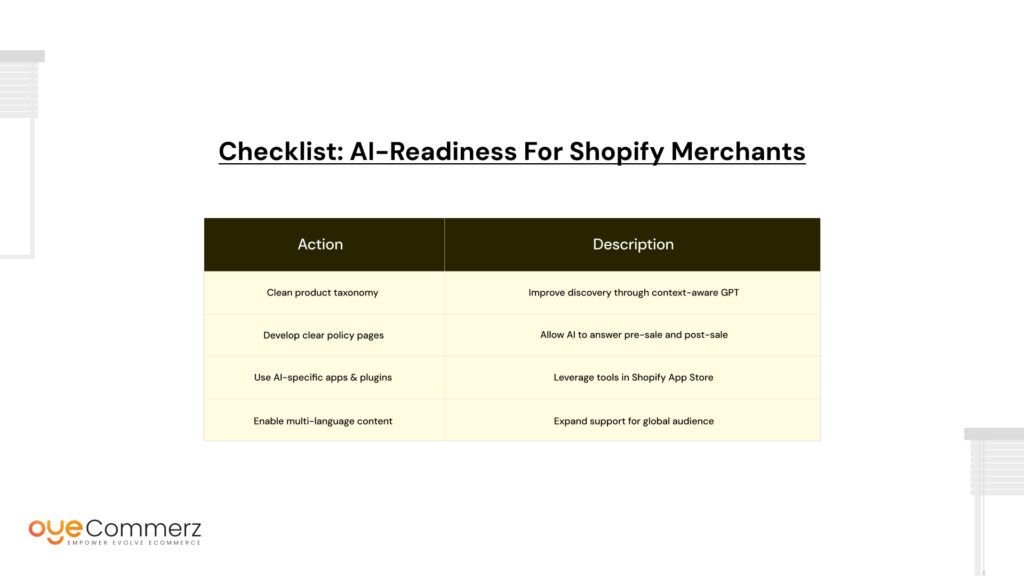
By following these preparation steps, Shopify merchants position themselves to fully harness the power of AI. This foundation ensures a smoother GPT integration, helping businesses meet rising consumer expectations with smarter, faster, and more personalized service.
Ready to Elevate Your Ecommerce with Shopify’s GPT-Enabled Shopping Agents?
Unlock the full potential of AI-powered commerce with Oyecommerz’s expert Shopify services. From seamless GPT integration to customized store solutions, we help you stay ahead in 2025’s competitive ecommerce landscape.
Connect with us today to transform your online store into a dynamic, intelligent shopping experience that delights customers and boosts sales.
Contact to Migrate your Site to Shopify Now
Conclusion
AI is no longer a passing trend, it has become the new standard in ecommerce. Businesses that fail to adopt Shopify services featuring GPT-enabled shopping agents risk losing customer relevance and market share. These agents go beyond basic tools; they serve as critical touchpoints for trust, personalization, and customer satisfaction. By blending human expertise with AI-powered assistance, brands can offer seamless, 24/7 support that today’s shoppers demand.
The future of ecommerce hinges on this hybrid approach, where intelligent agents handle routine queries while humans manage complex interactions. Together, they create a superior, responsive experience that builds loyalty and drives growth.
Shopify’s GPT-Enabled Shopping Agents show that 2025’s winning formula is clear: intuitive, intelligent, and always available. Embracing this technology is no longer optional, it’s essential for businesses aiming to thrive in the evolving digital marketplace.
Frequently Asked Questions
Easy store setup
Customizable themes
Secure payment gateways
Product & inventory management
SEO & marketing tools
App integrations
Mobile-friendly
Analytics dashboard
Shopify uses Shopify Magic, its built-in AI, to assist with tasks like product descriptions, customer support, marketing automation, and business insights.
It’s an AI tool that automatically generates compelling product descriptions using minimal input, saving time while keeping copy persuasive and on-brand.
Yes. Shopify’s AI-powered website builder helps generate personalized store layouts, product pages, and content using AI prompts, especially during onboarding.

